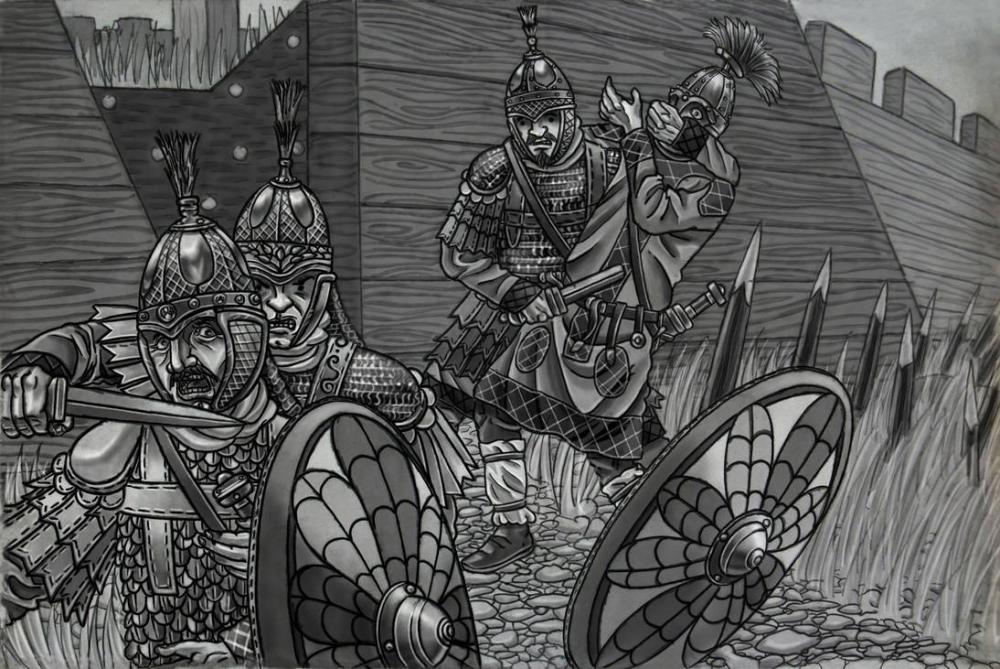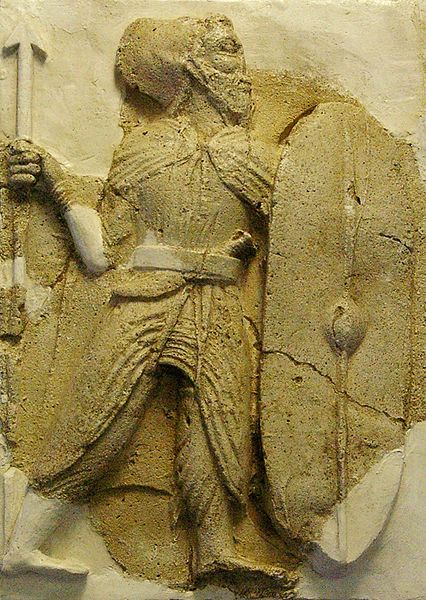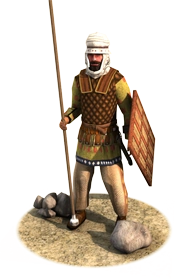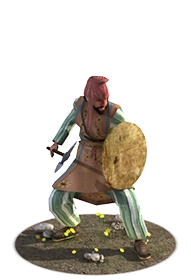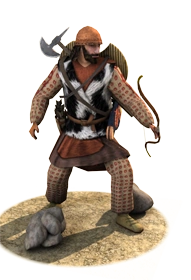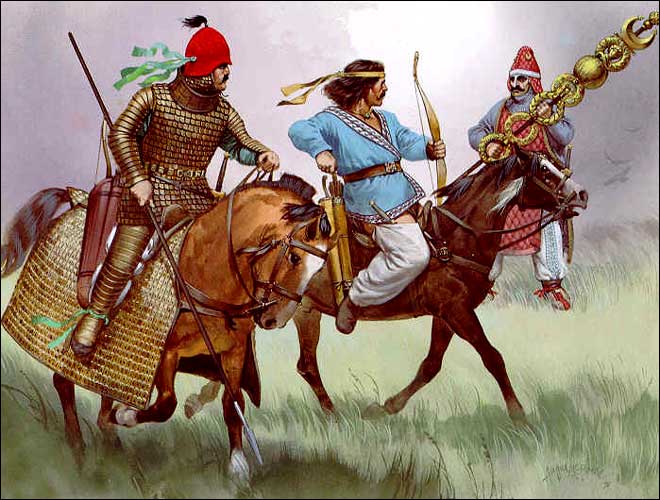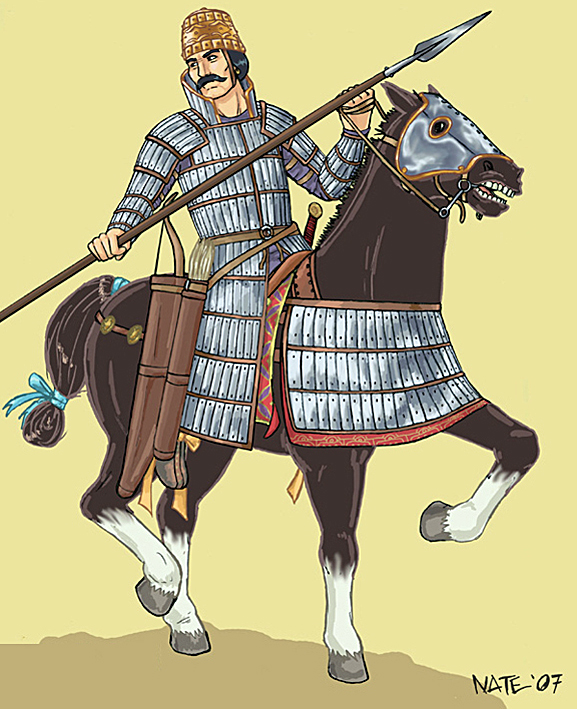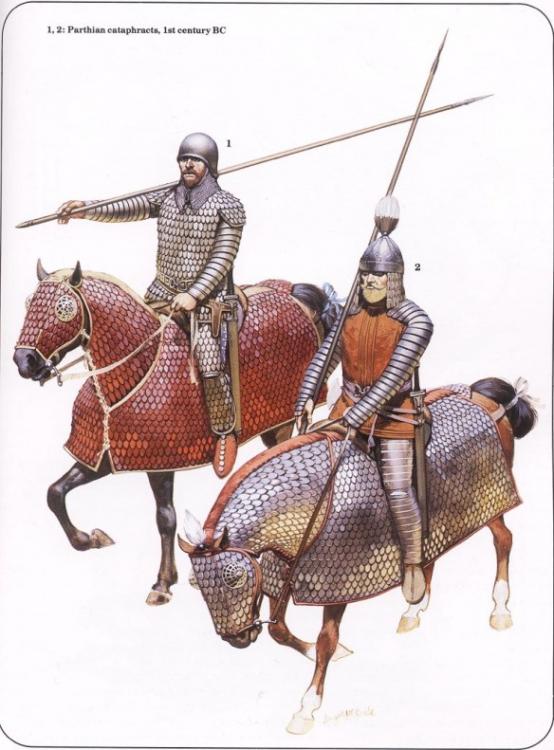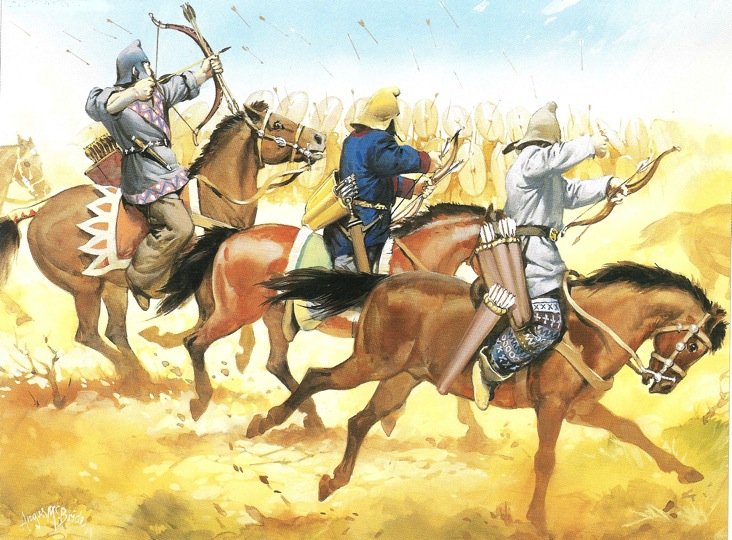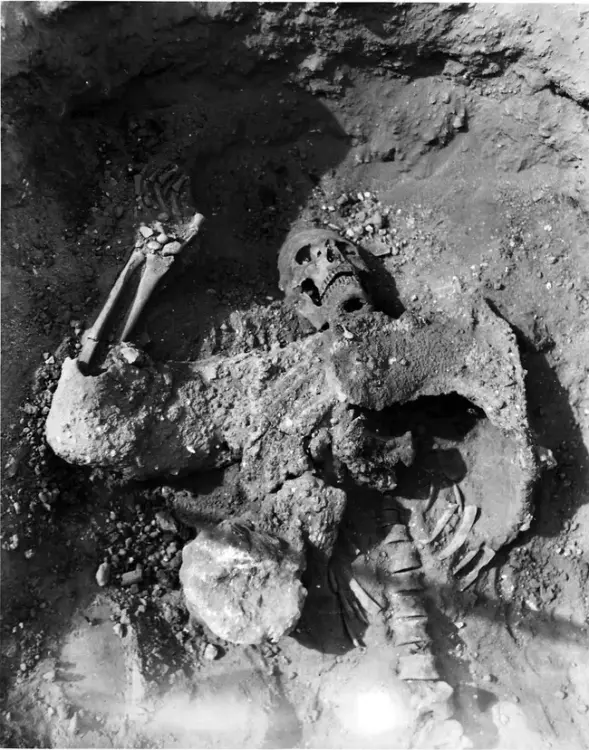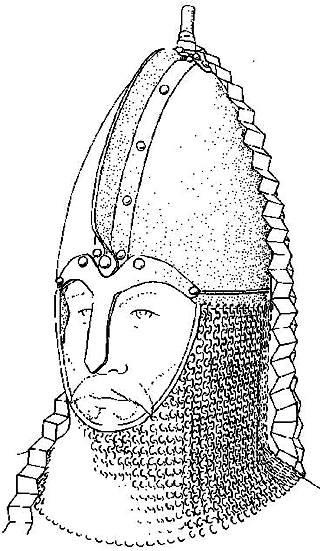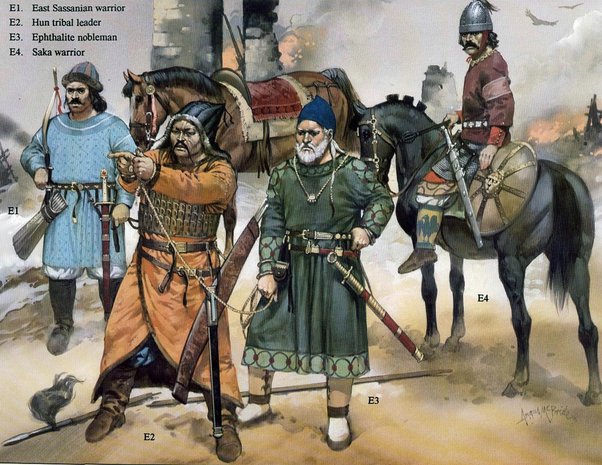
d34d svn
Community Members-
Posts
65 -
Joined
-
Last visited
-
Days Won
3
d34d svn last won the day on May 12 2024
d34d svn had the most liked content!
Recent Profile Visitors
The recent visitors block is disabled and is not being shown to other users.
d34d svn's Achievements

Discens (2/14)
28
Reputation
-
Current timeline? 500 AD means Daylamites are light infantry wielding heavy javelins, spears and battle axes. Daylamites became elite heavy infantry during the reign Kosrow II after the death of Bahram Chobin when the rebellion failed. 3000 Daylamites rebels who have surrendered themselves to Kosrow II became the "Jund Shahanshah" or the Daylamites shock infantry.
-
Special tech for Sasanian units: Paygan Salar: unlocks Roman Arms and Persian Heavy Spearman upgrade Grivpanvar/Clibanarii: special optional upgrade for Azadan Cavalry, granting full horse armor and additional boost on attack, defense and health. Chemical attack option (requires siege warfare, sappers tech) for Dismounted Azadan Cavalry, Siege equipment upgrade (optional upgrade for siege warfare), upon receiving siege equipment upgrade the unit become a Dismounted Grivpanvar/Clibanarii, Subterfuge upgrade (requires espionage) allows disguise, assassinate, arson and sabotage.
-
New option for Dismounted Azadan Cavalry: 1. Siege assault upgrade (requires blacksmith), granting the selected unit heavy lamellar and additional health, attack and defense boost. 2. Subterfuge upgrade (requires espionage), granting the selected unit the ability to disguise, assassination and sabotage/arson. Behind the enemy lines by Aemilianvs https://www.deviantart.com/amelianvs/art/Behind-the-enemy-lines-790119597
-
-
Parthian infantry are insignificant, i suggest the team gave them a few basic infantry and mercenaries would be enough for a horse archer faction. Iranian spearman Iranian Axeman Iranian Archer
-
4. The Parthian Period. The Greco-Persian wars and Alexander’s victories proved that light-armed troops could not stop heavy, well-trained, and brilliantly led infantry of the type of hoplites or phalanx. These could only be encountered with heavily armed and highly professional cavalry causing disorder in the massed ranks and then attacking them on vulnerable points with bowshots capable of piercing armor and lances effective against shields. This lesson went home with the Parthians who in ousting the Seleucids from Iran had ample opportunity to experience the effect of heavily armed professional infantry led by Macedonian kings, and soon came to learn about the armament, tactics, and strategy of the Roman empire as well. So they formed their armies on sound bases, taking into consideration what was needed and what was available to them. In extent, the Parthian empire was smaller than that of the Achaemenids; it was also far less centralized. It lacked, for instance, a standing army (Herodian 3.1). There were of course the garrisons of towns and forts as well as armed retinues of tribal chiefs, feudal lords, and of the Great King himself, but these were limited and disunited. The military concerns were conditioned by the feudal system: when the need arose, the Great King appealed to his subordinate kings (there were 18 of them at one time: Pliny, Natural History 2.26), regional, and tribal lords and garrison commanders to muster what they could and bring them to an appointed place at a given time (Herodian, loc. cit.). The feudal lords and officials brought the mustering levies (*hamspāh: E. Herzfeld, Altpersische Inschriften, Berlin, 1938, pp. 313f.), and sometimes supplemented them with foreign mercenaries (Josephus, Jewish Antiquities 18.9.2, 22.3.4; on the mercenaries in general see J. Wolski, “Le rôle et l’importance des mercenaries dans l’état parthe,” Iranica Antiqua 5, 1965, pp. 103ff.). The backbone of the army (Parth. spā’) and the chief power of controlling the empire consisted of the Parthians themselves. Accustomed from an early age to the art of horsemanship and skilled in archery, the Parthian secured a reputation that is still echoed in the Persian term pahlavān (< Pahlav < Parθava) while Parthian tactic and shooting are examplary in military histories. The nature of their state and political conditions combined with lessons of history enforced an unusual military structure in Parthia: North Iranian nomads constantly threatened eastern borders while in the west first the Seleucids and then the Romans were ever ready for full-scale invasions. Any stratagem against such a double danger required rapid mobility for going from Armenia to the Jaxartes on short notice; and the solution the Parthians found was to rely on cavalry (asbārān; ʾsbʾr attested in Nisa documents; V. G. Lukonin in Camb. Hist. Iran III/2, 1983, p. 700). It is true that Parthian armies did have foot soldiers, but their numbers were small and their function insignificant (Plutarch, Crassus 19; Appian, Bella civilia 2.18). On tactical considerations, too, only the cavalry could be useful to the Parthians, for the nomads of the east could easily break through any infantry that the Parthians were able to muster, while no Parthian infantry could have matched the Roman phalanxes on the western front. The Parthian nobles (āzāt, misunderstood by Greek and Roman sources as “free-men,” Lukonin, loc. cit.) formed the army by bringing along their dependants (misunderstood by Greek and Roman sources as “slaves,” Lukonin, ibid.). The example par excellence was Sūrēn who was not yet thirty years old when he vanquished Crassus: he came escorted by a thousand heavy-armed horsemen and many more of the light-armed riders, so that an army of 10,000 horsemen was formed by his bondsmen and dependants (Plutarch, Crassus 21 ). 400 Parthian āzāts threw an army of 50,000 mounted warriors against Mark Antony (Justin 41.2). Experience had shown that light cavalry—armed with a bow and arrows and probably also a sword—was suitable for skirmishes, hit-and-run tactics, and flank attacks, but could not sustain close combat (Justin, loc. cit.; Plutarch, Crassus 24; G. Rawlinson, The Sixth Great Oriental Monarchy, London, 1873, p. 405). For the latter task, heavy cavalry (cataphracti) was formed, which wore steel helmets (Plutarch, Crassus 24), a coat of mail reaching to the knees and made of rawhide covered with scales of iron or steel that enabled it to resist strong blows (ibid., 18, 24, 25; Justin, loc. cit.; on the description of the armor worn by the cataphracti given by the third-century story writer Heliodorus of Emesa, Aethiopica 9.15, see F. Rundgren, “Über einige iranische Lehnwörter im Lateinischen und Griechischen,” Orientalia Suecana 6, 1957, pp. 31-65 esp. pp. 33ff. with references). This was akin to the lamellar armor of the Sacians of the Jaxartes who in 130 B.C. overthrew the Greco-Bactrian kingdom (A. D. H. Bivar, “Cavalry Equipment and Tactics on the Euphrates Frontier,” Dumbarton Oaks Paper 26, 1972, pp. 273f.). The charger too was covered from head to knees by armor made of scale armor said to have been of steel or bronze (Justin, loc. cit., Plutarch, Crassus 24). An actual example of this horse-armor was found at Dura Europos (M. I. Rostovtzeff, The Excavations at Dura-Europos: Preliminary Report of the Second Season, New Haven, 1931, pp. 194ff.), while a famous graffito of the Parthian cataphract from the same site clearly demonstrates his full panoply (idem, Caravan Cities, Oxford, 1932, p. 195; F. E. Brown, “Sketch of the History of Horse Armor,” in M. I. Rostovtzeff and A. R. Bellinger, eds., The Excavations at Dura-Europos: Preliminary Report of the Sixth Season of Work, New Haven, 1936, pp. 444ff.). For offensive weapons the cataphract had a lance and a bow. The spear was of unusual thickness and length (Plutarch, Crassus 27, Antony 45; Dio Cassius 40.22; Herodian 4.30), and was used with such skill—relying on its weight—and power that it “often had impetus enough to pierce through two men at once” (Plutarch, Crassus 27). The bow was of the powerful and large compound type which outranged Roman weapons and its arrows, shot with swiftness, strength, and precision, penetrated the armor of the legionaries (Plutarch, Crassus 18, 24; see further Rawlinson, op. cit., p. 404; N. C. Debevoise, A Political History of Parthia, Chicago, 1938, p. 86; F. E. Brown, “A Recently Discovered Compound Bow,” Seminarium Kondakovianum 9, 1937, pp. 1-10). The cataphract was probably equipped with a knife as well (Rawlinson, loc. cit.). So armed and thus skilled, he was one of the ablest and most feared soldiers of antiquity (on the cataphract see in more detail O. Gamber, “Grundriss einer Geschichte der Schutzwaffen des Altertums,” Jahrbuch der kunsthistorischen Sammlungen in Wien 52, 1966, pp. 7ff. esp. pp. 49-52; idem, “Katafrakten, Clibanarii, Normanenreiter,” ibid., 64, 1968, pp. 7ff.; B. Rubins’s summary of Drevniĭ Khorezm by S. P. Tolstov, Moscow, 1948, in Historia 4, 1955, pp. 264ff.). The Parthian army was at times additionally supported by camel-borne troops (Herodian 4.28, 30). The animal could bear the weight of the warrior and his armor better and endure harshness longer than the horse; also, the archer could discharge his arrows from an elevated position. These would have made the division very desirable had it not been greatly hampered by Roman caltrop (tribulus) which, scattered on the battlefield, injured the spongy feet of the animal (ibid.). The Parthian tactic was that of harassing the enemy by the hit-and-run action, dividing his forces by pretending retreat and enticing pursuit but then turning unexpectedly back and showering the foe with deadly arrows, and, finally when he was reduced in number and courage, to surround him, and destroy him with volleys of missiles. The tactic was thus unfavorable to close combat operation, and inefficient in laying siege to forts and walled towns; nor could the Parthians sustain long campaigns, especially in the winter months (Rawlinson, op. cit., pp. 406ff.). Since they lacked siege-engines, the Parthians made no use of Roman machines whenever they captured them (Plutarch, Antony 38). And since the army was composed mainly of the dependants of the āzāts, it had to disband sooner or later and go back to the land and the crops. The Parthian general desired to bring to a close a campaign as soon as possible and return home. When the Great King led the army this haste was doubled by the fear of insurrection at home, the frequency of which was the greatest weakness of the Parthian empire. The battle was furious: war cries and kettledrums resounded from all sides, setting fear in enemy ranks (Plutarch, Crassus 23, 26; Justin 41.2; Herodian 4.30); mounted on the light horse the archers showered the enemy with volley after volley, and then retreated but again turned back to shoot while the charger was at full gallop—an ancient art which came to be known as “the Parthian shot” (M. L. Rostovtzeff, “The Parthian Shot,” AJA 47, 1943, p. 174ff.). Then the shock cavalry (cataphracts) moved in, still avoiding hand-to-hand combat but picking up the enemy with their missiles and piercing them with the heavy lance. Charging on large and trained war horses (see under Asb), of which some were brought as reserves (Dio Cassius 41.24), the Parthians avoided the deficiency of the Achaemenid cavalry by carrying camel-loads of arrows for use in the field as soon as their archers ran out of their own; this enabled sustained and effective long-range engagements and reduced the number of the enemy rapidly (Plutarch, Crassus 25, see further Rawlinson, op. cit., pp. 160f.; 402ff.). The organization of the Parthian army is not clear, and lacking a standing force, a strict and complicated organization was unnecessary in any case. The small company was called wašt; a large unit was drafš; and a division evidently a gund (G. Widengren, “Iran, der grosse Gegner Roms: Königsgewalt, Feudalismus, Militarwesen,” in H. Temporini and W. Haase, eds., Aufstieg und Niedergang der römischen Welt II/9.1, 1976, 220ff. esp. pp. 281f.). The strength of a drafš was 1,000 men (Lucian cited by A. Christensen, Smeden Kāväh og det Gamle Persiske Rigsbanner, Copenhagen, 1919, pp. 23f. [tr. J. M. Unvala, “The Smith Kaveh and the Ancient Persian Imperial Banner,” Journal of the Cama Oriental Institute 5, 1925, pp. 22ff. esp. p. 37 n. 2]), and that of a corps 10,000 (cf. Sūrēn’s army). It seems, therefore, that a decimal grade was observed in the organization of the army. The whole spā’ was under a supreme commander (the Great King, his son, or a spā’pat, chosen from the great noble families). The largest army the Parthians organized was that brought against Mark Antony (50,000: Justin 41.2). At Carrhae the proportion of the lancers to the light horse was about one to ten, but in the first and second centuries the number and importance of the lancers as the major actors of the battle-field increased substantially (Bivar, op. cit., pp. 274-75). The Parthians carried various banners, often ornamented with the figures of dragons (Christensen, op. cit., tr. Unvala, pp. 37f.), but the famous national emblem of Iran, the Drafš-e Kāvīān, appears to have served as the imperial banner (ibid., p. 39). The Parthians marched swiftly but very seldom at dark (Plutarch, Crassus 29; Antony 47). They used no war chariots, and confined the use of the wagon to transporting females accompanying commanders on expeditions (Rawlinson, op. cit., p. 409). The Parthian period holds an important place in military history. Several Parthian kings—including the first and the last—fell in action, and their three century-long conflicts with Rome had profound effects on Roman military organization. For they not only succeeded in repulsing repeated Roman attempts at the conquest of Iran, but they inflicted severe defeats—even in their last days—upon the Roman invaders; and to face the long-range fighting tactics of the Parthian armored cavalry and mounted archers, the Romans started to supplement their armies of heavy and drilled infantry with auxiliary forces of riders and bowmen, thereby increasingly modifying traditional Roman arms and tactics (for details see E. Gabba, “Sulle influenze reciproche degli ordinamenti militari dei Parti e dei Romani,” in La Persia e il mondo greco-romano. Rome, 1966, pp. 51ff.). The Parthians finally submitted to an Iranian dynasty which had close links with them and retained the power of their nobility, one reason for their defeat being that while they still wore the old style lamellar armor, the Sasanians went to battle with the Roman type mail shirt, i.e., armor of chain links, which was more flexible and afforded better protection (Bivar, op. cit., p. 275). https://www.iranicaonline.org/articles/army-i ARSACIDS viii. Military Architecture Of Parthia Some interesting features appeared in the military architecture of the vast Parthian domain ruled by the Arsacids (q.v. Bergamini, pp. 195-214; Colledge, pp. 21-79; Francfort, pp. 23-39; Pugachenkova, pp. 26-60), the dynasty that emerged in the wake of a relatively short occupation of Iranian territories by Alexander the Great (q.v.) and his successors (Debevoise, pp. 7-53). Starting from the area of modern Turkmenistan, which the Dachae or Parni tribes conquered after the Andragoras (q.v.) rebellion (Wolski, 1993, pp. 32-33; Idem, 1950, pp. 111-14), the Arsacids extended their empire to the Euphrates in the west taking Mesopotamia in ca. 141 BCE (Wolski, 1993, pp. 80-83). Two main traditions can be observed in the military architecture of the period. In the western parts of the Parthian Empire, i.e., in the Mesopotamian plain, military and defensive systems and fortifications developed under a clearly strong influence of earlier civilizations that had existed in the region. The eastern Parthian territories, on the other hand, drew on various traditions of military architecture developed in Central Asia (Francfort, pp. 23-39). The dislodging of the Greeks resulted in no particular change in the defensive architecture, presumably because of the nomadic tradition that must have still determined the outlook of the early Parthians. Consequently, the new dynasty, installed in the Partava province, was focused on stabilizing the situation and maintaining the recently conquered territories. A reorganization of the defensive system of the state came later or was a parallel process (Jakubiak, pp. 127-50). Some fortified cities had already existed in the early Arsacid period. Merv (or Marv, first called by the Greeks Alexandria Margiana and later Antiochia Margiana) was among the biggest cities in all of Central Asia and an important center on the northeastern frontier. It was established under the Achaemenids (q.v.) and enjoyed a prosperous period under Greek and Parthian domination (Pugachenkova, pp. 19-21, 39-44). Its defensive architecture reveals several characteristic elements. The oldest samples of this architecture are the round Erk Kala citadel, erected by the Achaemenids, and the lower town, erected on a square plan by the Greeks. One of the most important elements to appear at the Greeks’ inspiration was a protejchisma, found in the lower town in Merv (Herrmann, Kurbansakhatov, and St. John Simpson, pp. 9-52). A similar construction can be expected in another fortified city Kyrk Kala, which repeated the plan of Merv (Pugachenkova, p. 41). Moreover, it seems that strategically located sites evolved and were furnished with new solid curtain walls. The military system, recognized at these two sites, did not change under the Arsacids, but there were several new developments in this part of the state under the Parthians. Old Nisa—the ancient Mitridakent, capital of Parthia built by Mithridates II (r. 132-88/7 BCE; Invernizzi, pp. 137-40; Wolski, 1993, pp. 93-4) merit attention (FIGURE 1). A look at the defensive wall, its shape, and overall construction gives a clear idea of how the Arsacids perceived military architecture, even if as a capital city with official and representative functions it held a special place among Parthian towns. The mud-brick curtain wall was erected on a huge pakhsa, or compacted clay platform. The weakest points at the corners were strengthened with five massive bastions, and there were characteristic buttresses projecting from the wall at regular intervals, and ramps, giving access to the city gates. Military architecture in the Central-Asian part of the Arsacid domain fell into two different categories. The first and apparently more popular form during the period in question included fortifications erected on a square or rectangular plan. These structures of differing sizes were characterized by a relatively regular spacing of the towers or large buttresses projecting beyond the curtain walls. Massive corner towers were strongly accentuated in these structures. Gates came in several variants, presumably dependent on individual architectural conditions; they are a good example of experimenting with new solutions that were advantageous from the military point of view, starting from simple gates through sluice-like gates to constructions of a barbican nature. Gates of the kind can be found at Kyrk Tepe, Akcha Tepe (Pugachenkova, pp. 29 and 46; Koshelenko, p. 64), Chichanlik Tepe (Pugachenkova, pp. 29 and 46; Koshelenko, p. 62; Francfort, p. 31), Durnali (Pugachenkova, pp. 47-52; Bader, Gaibov, and Koshelenko, pp. 117-28), and Chilburj (FIGURE 2; Pugachenkova, pp. 51-54; Koshelenko, pp. 58 and 63; Gaibov, Koshelenko, and Novikov, pp. 21-32). The second category is represented by big cities with defensive walls and an easily distinguished, heavily fortified citadel. The Dev Kala site (Koshelenko, p. 61) is a case in point, as well as many other sites from the Gorgān (q.v.) plain, e.g., Qalʿa-ye Dašt-e Ḥalqa, Qalʿa-ye Gāvmiāli, Qalʿa-ye Ḵarāba, Qalʿa-ye Pāras, and Qalʿa-ye Gug (Kiani, passim). A huge defensive system, including many outposts and fortresses, was also constructed in the Gorgān region (Huff, pp. 105-10; Kiani, passim) for protection against raids by nomadic tribes from Dehestān (q.v.; Wolski, 1993, pp. 33-34, 37; Lacomte, pp. 142-45). It is traditionally referred to as the wall of Alexander the Great, but there is no actual evidence that the Greek conqueror had a role in its construction. In any event, it was definitely in existence under the Arsacids, and it demonstrates the Parthians’ familiarity with issues of organization and the protection of strategic and fertile territories like, for example, Gorgān. In modern Iranian territories, almost no military architecture is known outside the Gorgān plain. Only a few structures, such as Tepe Čoraḡi and Ḵārkon near Hamadan and Malāyer, for example, may have been erected during the Parthian period (Kleiss, pp. 135-36). More information on Arsacid military architecture comes from Mesopotamia. Its development there took place under a strong influence from western and earlier Assyro-Babylonian civilization. Consequently, massive curtain walls, furnished with regularly spaced projecting towers, had a long tradition dating back to at least the Early Bronze Age, both in regular military constructions and in city walls. The defensive complexes of Hatra (q.v.; Andrae, pp. 24-59, Khalil Ibrahim, pp. 117-23; Gawlikowski, pp. 147-84), Khirbeth Jaddalah (Khalil Ibrahim, pp. 143-54), Nippur (Knudstad, pp. 95-106; Bergamini, pp. 205-09), Ctesiphon (q.v.), and Dura Europos (q.v.; Gerkan, pp. 4-61; Bergamini, pp. 197-201; Kennedy and Riley, pp. 112-14; Gelin, Leriche, and žAbdul Massih, pp. 46; žAbdul Massih, pp. 47-54) merit special attention for the discussion of Parthian military architecture. Hatra is undoubtedly the best example of a fortified city preserved from the Parthian period in Mesopotamia (FIGURE 3). The round plan took advantage of a naturally defensive location while the walls were furnished with a number of projecting towers, and four city gates built of stone blocks. Enemy troops would have first been engaged by a network of small forts like, for example, Khirbeth Jaddalah (FIGURE 4), that would block their path before they could actually attack Hatra. These small forts were also used as residences by Hatrean elite and nobles. The Khirbeth Jaddalah fort also exhibits characteristic defensive elements such as towers with rounded corners, which reduced the blind field in front of the curtain wall, and small compartments located all around inside the defensive wall. These fortifications were certainly not designed to stand a long siege, unlike the well-prepared systems of the big cities of Hatra, Ctesiphon (qq.v.), and other Mesopotamian cities settled in the Arsacid period. Since little is known of Ctesiphon, which like Hatra had been besieged by Roman forces, other military constructions known from Parthian Mesopotamia have to be considered. Foremost is Nippur of the 1st century CE (Bergamini, p. 205), a fort built around the ziggurat. A similar structure is known from Mount Babyl in Babylon (Werzel, Schmidt, and Malwitz, p. 58; FIGURE 5). That structure is alleged to be of late Parthian time, as the round defensive towers projecting from the main curtain wall suggest. Not to be omitted in this discussion is Dura Europos (FIGURE 6), illustrating how the Parthians took advantage of structures erected by the Greeks in the early Hellenistic period. With its curtain walls and military structures, as well as its strategic location, the city had played an important role on the western Parthian border for many years. To the extent of our knowledge of Arsacid military architecture, we can observe a number of characteristic features. Continuity and change had typified architecture in the region ever since Achaemenid times. Specific elements were taken from Greek military architecture (Lawrence, passim; McNicoll, passim), resulting in a new category of defensive structures adapted to the military needs of the Seleucids, in as much as for providing protection against nomadic tribes raiding from Central Asia. The first construction boom must have been under Arsaces I (r. 248/7—after 217 BCE) and Arsaces II (r. after 217—ca. 191 BCE), followed by a peak in development at the time of Mithridates I (r. ca. 171—139/8 BCE) and Mithridates II (r. ca. 124/3—88/7 BCE; see ARSACIDS), who probably had to rearrange the military system in Mesopotamia after its conquest. The system definitely developed in the Arsacid Empire until its fall and the rebellion of Ardašir I (r. 224 or 226—242 AD, q.v.; Wolski, 1993, pp. 195-96; Verstandig, pp. 340-59), which gave a new impetus to the development of Iranian military architecture. https://www.iranicaonline.org/articles/arsacids-viii-military-architecture-of-parthia
-
Core of the Parthian army: Parthian horse archers Elite of the Parthian army: Azadan cavalry Early Parthian/Daha Azadan cavalry Parthian Azadan Cavalry, 1st century BCE Parthian_Cataphract_vs_the_Roman_Army_53_BC-AD_224.pdf
-
Sappers tech, siege ladder and arson tech attack for Persian spearman/ Persian heavy spearman sword auxiliary and Dismounted Azadan Cavalry. Meanwhile chemical attack was given to Dismounted Azadan Cavalry as a mean to clear out enemy garrison in buildings. The chemical attack on Dura Europos wall section was launched by a Persian infantry (possibly a Sasanian trooper/Azadan). The reconstruction of the Persian trooper perished in the siege mine suggest he could be a dismounted cavalryman. https://www.livescience.com/13113-ancient-chemical-warfare-romans-persians.html Consider the Dismounted Azadan Cavalry's chemical attack ability as the union of a flash bang grenade and a terrorist from Command and Conquer: Generals/Zero Hour. As the unit use the ability on the damaged and garrisoned building, he and the garrisoned enemies dies instantaneously.
-
Sasanian units that exist in the time frame: Basic Persian spearman (with the option of using Roman arms) Persian sword auxiliary (sword wielding infantry, expensive) Dismounted Azadan Cavalry (heavy infantry armed with two-handed Persian sword) Persian archer Azadan Cavalry (armored lancer) Mercenaries Saka Cavalry (mercenary cavalry archer) Daylami mercenaries (cheap, axe wielding mercenaries) Daylami mercenaries (cheap, spear wielding mercenaries) Daylami mercenaries (cheap, javelin wielding mercenaries) Elite Zhayedan (Immortals, armored lancer) Royal archer (Household archer of House Sasan) War elephants Navy Arabian Dhow/Omani Dhow Roman Trireme (requires Espionage) Siege Siege tower Battering Ram Onager Scorpiones
-
ARABIA ii. The Sasanians and Arabia Within a few years after the commencement of Ardašir I’s (r. ca. 224-242) program of conquest, the Sasanians undertook military engagements in both northeastern Arabia and Oman. In the late Sasanian period, they conquered Yemen Aden (see ABNĀʾ). Generally, however, the Sasanians seem to have exercised political control in Arabia via their Arab clients. According to Ṭabari and Ebn al-Aṯir, who copied him, Ardašir campaigned around 240 in Bahrain (Ṭabari, I/2, p. 820; tr., p. 15; Ebn al-Aṯir, I, p. 384); in Oman, Bahrain, and Yamāma (Dinavari, p. 45; tr., p. 69); or “in the country which lies between” Oman, Bahrain, Yamāma, and Hajar (Nehāyat al-erab, fol. 92b, apud Widengren). His adversary was a king in Bahrain named Sanaṭroq (Ṭabari, Dinavari, Nehāyat al-erab,) and a king in Oman named ʿAmr b. Wāqed Ḥemyari (Nehāyat al-erab, fol. 92b, apud Widengren). The Nehāyat al-erab elaborates further, suggesting that unnamed Arab kings wrote to Asʿad b. ʿAmr, king of Yemen, informing him of Ardašir’s attack, and that Asʿad marched with an army of 100,000 including “inhabitants of Tahāma, and those kings who were there among the descendants of Nezār b. Maʿadd and Fehr b. Mālek and Qalammas b. ʿĀmer b. Żāreb” (tr. Piacentini, 1985, p. 63). After killing the kings of Bahrain and Oman in battle, Ardašir is said to have sent a message to Asʿad b. ʿAmr with an offer of peace and confirmation of his continued rule in Yemen; a promise was extended also to the kings of the Hejaz (northwestern Arabia) and Tahāma (coastal southwestern Arabia). After this, Ardašir is said to have returned to Eṣṭaḵr (Nehāyat al-erab, fol. 92b, apud Widengren). The historicity of either a very pointed campaign by Ardašir against Bahrain (understood as the northeast Arabian mainland, rather than the island of the same name; see Wüstenfeld, pp. 175-97) or a more extensive one that took in the entire region between Oman and the modern Hofuf oasis (Hajar) has been discussed by scholars since 1879, when Theodor Nöldeke published his translation of that part of Ṭabari which deals with the history of the Sasanians and the Arabs. Whereas some scholars (e.g., Altheim and Stiehl; Widengren, p. 755) have dismissed it as a confusion with Ardašir’s conquest of Hatra in northern Iraq (based on the graphic similarity between Hatra in Syriac and Ḥaṭṭā, the name of the coastal strip in northeastern Arabia), others (e.g., Piacentini, 1984; idem, 1985, pp. 64 ff.; Potts, 1985, p. 89; Daryaee, in Šahrestānīhā ī Ērānšahr, p. 54) have accepted the conquest of eastern Arabia and Oman as plausible, even if the part of the story recounted in the Nehāyat al-erab about Nezār b. Maʿadd, Fehr b. Mālek, and Qalammas b. ʿĀmer embodies “some legendary embellishments and an intentionally epic tone” (Piacentini, 1985, p. 66). One wonders what motivation Ardašir could possibly have had for launching an attack on eastern Arabia. The answer perhaps lies in the often discussed and equally contentious Parthian or Characene presence (Potts, 1985, p. 89; idem, 1988; idem, 1997) in eastern Arabia, and possibly in the alleged involvement of Arabs (tāzigān) and people from Mazun (mazunigān, i.e., Omanis) “who [inhabit] on the [Arabian] shore of the [Persian] Gulf” in the army of Haftānboḵt (q.v.), who was defeated by Ardašir in coastal Fars, according to the Kār-nāmak ī Arsašīr ī Pābagān (sec. 7.12; Asha, p. 33; Bosworth notes that the name “is probably a misrendering of an Achaemenid term for an administrative district, denoting a component part of a province”; see Ṭabari, tr., p. 10, n. 32). In any case, one indication that an Arabian campaign may have taken place is provided by the eighth-century Šahrestānīhā ī Ērānšahr (sec. 52), according to which Ardašir “appointed Ōšag of Hagar as margrave (over the) Dō-sar and Bor-gil by the wall of the Arabs” (Daryaee, in Šahrestānīhā, p. 20). Moreover, Ṭabari says that, in Bahrain, Ardašir founded a new city called Fasā (?) Ardašīr or “the city of al-Ḵaṭṭ” (cf. Syriac Ḥaṭṭā, noted above; Ṭabari, p. 820; tr, p. 16, n. 64; Nöldeke, 1879, p. 20; Frye, 1983, p. 167 and note 3, suggesting instead Pērōz Ardašir, i.e., “victorious [is] Ardašir”). According to Yāqut (V, p. 122, apud Lammens), Ardašir established the Azd, an important tribal group in Oman, at Šehr on the Hadramawt coast (Lammens, p. 398; Potts, 2008, p. 198). Indirect confirmation of Sasanian control over Mazun in the reign of Ardašir is provided by Šāpūr I’s inscription at Kaʿba-ye Zardošt at Naqš-e Rostam near Persepolis, which includes it as one of his provinces (sec. 3.17). The likelihood that it was inherited by Šāpūr from a prior conquest of his father’s is strong, considering the fact that Šāpur himself is never said to have campaigned there (Potts, 2008, p. 200). According to the Šahrestānīhā ī Ērānšahr (sec. 25), Ḥira, near Kufa, was established by Šāpūr I, and this has been taken by some scholars as an indication that the Lakhmid dynasty there, who later functioned as Sasanian vassals charged with policing the Arab population of northern Arabia, was established at this time (e.g., Rothstein p. 44; Retsö, p. 481). Thereafter the Laḵmids functioned in much the same fashion as the Ghassanids did in northwestern Arabia for the Byzantine state (Nöldeke, 1888; Shahid, pp. 3-46). A Sasanian presence on the borders of Hadramawt may have been the motivation behind an embassy sent by Šammar Yuharʿiš, king of Sabaʾ, Ḏu Raydan, Hadramawt, and Yamnat, to Ctesiphon in the early 4th century, perhaps on the occasion of the birth of Šāpūr II (Potts, 2008, p. 202). If so, this diplomatic gesture was a success, for when Šāpūr II launched a vicious assault on northern Arabia in 325, he is said by Ṯaʿālebi not to have advanced as far as Yemen “because the kings of this country were his clients” (Widengren, p. 731). According to Ṭabari, the impetus for the campaign was a series of attacks by Arabs from northeastern Arabia “who looked on Fars as their pastureland” (Ṭabari, I/2, pp. 838-39; tr., pp. 54-55; Nöldeke, 1879, p. 53). These prompted Šāpūr II to cross the Persian Gulf to Ḥaṭṭ; advance through Bahrain and Hajar, slaughtering many tribes (Tamim, Bakr b. Wāʾel, ʿAbd-al-Qays) as he went; destroy wells in Yamāma; and advance as far as Medina. Šāpūr deported some Tamim tribesmen to Kerman and Ahvaz (Nöldeke, 1879, p. 233), piercing their shoulder blades and binding them, for which, according to several Arab writers, he was termed Ḏo’l-aktāf, “lord of the shoulders” (Ḥamza, pp. 51-52; tr. pp. 49-50; Ḵᵛārazmi, pp. 102-3; tr., p. 102; Nöldeke, 1879, p. 57, n. 2; Christensen, p. 235, n.2). Aside from interactions with their Lakhmid vassals, there is subsequently little evidence of direct Sasanian involvement in Arabia until the reign of Ḵosrow I Anušervān (r. 531-79). According to Ṭabari, during the reign of Justin II (r. 565-78), Sayf b. Ḏi Yazan Ḥemyari sought Byzantine assistance in expelling Ethiopian forces from Yemen (cf. the discussion in Rubin, pp. 192 ff.), but when he was rebuffed, he turned instead to the Lakhmid ruler Noʿmān b. Monḏer, Ḵosrow’s governor of Ḥira, and eventually to Ḵosrow. One account has it that an expeditionary force of 800 prisoners awaiting execution were sent out under a commander named Vahrez (a title: cf. Procopius, De Bello Persico 1.12.10; Dinavari, p. 65, tr. p. 92: Vahrez, son of Kāmjār; his real name may have been something like Ḵozrad Narsis, according to Omani oral tradition recorded by Miles, pp. 423-24; see also Justi, p. 340; Nöldeke, 1879, p. 223, n. 2) to conquer Yemen (Ṭabari, I/2, pp. 945-49; tr., pp. 235-41 and n. 591; Balʿami, pp. 1021-34; Dinavari, pp. 65-66; tr., pp. 91-93; Maqdesi, III, pp. 188-94; tr., III, pp. 532-36; Nöldeke, 1879, pp. 220 ff.). Also, earlier in his account, Ṭabari says that Ḵosrow sent an army of Daylamites, who “killed the Abyssinian Masruq in Yemen and remained there” (I/2, p. 899, tr., p. 160). An entirely different account is given by Theophanes of Byzantium, according to whom the Sasanian campaign was led by a general named Miranes (i.e., Mehrān, see Müller, p. 271; cf. Gignoux et al., pp. 99-100) against an Ethiopian king named Sanatourkes (Rubin, p. 190; there is evident confusion here with the Sanaṭroq of Bahrain defeated by Ardašir). Several contradictory sources date the death of Masruq to the 30th year of the Prophet Moḥammad (i.e., 582, thus Ḥamza, p. 136) or the 45th year of Kosrow's life, i.e., 575-76 (Masʿudi, sec. 1019; Ḥāji Ḵalifa, apud Fell, p. 46,). The yaum al-mošaqqar, which describes the ambush by Arab tribes of a caravan sent by Vahrez to Kosrow I, may reflect the tradition related by Ṭabari of the substantial booty forwarded to the Sasanian king that had been seized when the army entered Ṣanʿā (Potts, 2008, p. 207). Ṭabari also recounts the return of Vahrez to Ḵosrow, preceded by the installation of a Sasanian client, one Sayf b. Ḏi Yazan, charged with collecting taxes, “which he was to send to Kisrā annually as fixed sums” (I/2, pp. 949-50, tr. pp. 241-42). In another version of the story, Sayf was assassinated, and the Abyssinians returned to power, prompting Vahrez to lead a second expedition and re-conquer Yemen, where he remained as viceroy, a position held by his son Marzbān, grandson and great-grandson, until one Bāḏān was appointed governor. Bāḏān is said to have ruled until the coming of Islam (Ṭabari, I/2, pp. 957-58; tr., pp. 251-52; Nöldeke, 1879, pp. 236-37). These accounts, however, appear to conflate expeditions sent out by Ḵosrow I (the original one) and Ḵosrow II Parvēz (the later re-conquest). Probably related to the earlier campaign was the establishment of the fort at Rostāq in the interior of Oman (cf. rōstāg, the Mid. Pers. term for an administrative division), known as Borj Kesrā b. Šerwan, and the tradition, relayed in the Omani history known as the Ḵašf al-ḡomma, that “The Persian monarchs used to send persons who had incurred their displeasure or whom they feared to their army in ‘Omán” (Ross, p. 118). Like the Lakhmids in the north, the Jolandā rulers of Oman functioned as Sasanian vassals (Wilkinson, 1975). Despite four centuries of interaction, however, relatively little archeological evidence of the Sasanian presence has been found anywhere in eastern Arabia (coins: Potts and Cribb; Potts, 2010; metalwork: Potts, 1993; weaponry: Potts, 1997b; ceramics: Kennet). A few examples of Sasanian glass with cut and polished decoration have been found in Yemen (Whitehouse, p. 11, citing examples illustrated in Roux, p. 209), and a carved column capital from the Hadramawt has been compared with Sasanian architectural decoration (Keall, 1998). https://iranicaonline.org/articles/arabia-ii-sasanians-and-arabia
-
ASWĀR (Middle Persian) “horseman,” Old Persian asabāra, Parthian (Nisa) ʾsbry, Persian savār and sovār. In Old Persian asabāra designated the horseman as opposed to the foot-soldier. Thus Darius says (DNb 44-45, Kent, Old Persian, pp. 139-40) “(as) a spearman I am a good spearman both on foot (pastiš) and on horseback (asabāra).” The same concept is expressed by “man and horse” (asp ud mard, heterographically Mid. Pers. GBRA W SWSYA, Parth. GBRYN W SWSYN) in the Sasanian inscriptions (Kirdēr at Sar Mašhad and on the Kaʿba-ye Zardošt and Narseh at Paikuli), where the word aswār is not found. In the Zoroastrian Pahlavi books aswār also designates only the “horseman,” and it is not till in the later, Arabic sources that the term is said to have a more specialized meaning, cf. Ḵᵛārazmī, Mafāteḥ al-ʿolūm (ed. van Vloten, Leiden, 1895, p. 115): “al-asāwera, plural of al-oswār, i.e., horseman, because the Iranians give the name oswār only to a brave, heroic, famous man.” The terms aswārān or aswāragān (Christensen, Iran Sass., p. 265 n. 4) do not appear to be attested in the sense of the arabicized asāwīrāt “knights” (see Asāwera) in the Sasanian Middle Persian literature, where the warrior class is the artēštār(ān) (q.v.). Note that the reading andarzbed ī aswāragān in the Kār-nāmag, proposed by T. Nöldeke in his translation (Bezzenbergers Beiträge 4, 1878, p. 62 n. 3; cf. J. Darmesteter, Le Zend Avesta I, p. 31 n. 17; M. Boyce, The Letter of Tansar, Rome, 1968, p. 41 with n. 4 comparing Ar. moʾaddeb al-asāwera), is an emendation of the manuscript’s andarzbed ī wāspuhragān (see H. S. Nyberg, A Manual of Pahlavi, Wiesbaden, I, 1964, p. 11 l. 19 and II, 1974, p. 94). In modern times the Borhān-e qāṭeʿ (ed. Moʿīn, I, p. 135) reports that the term asvār is used in the language of Gīlān to designate a group of soldiers of the lowest rank who carry axes and wooden clubs with which they strike each other on the heads. This kind of battle they call asvārī. Source: https://iranicaonline.org/articles/aswar-middle-persian-horseman
-
A minor revision on Sasanian mercenaries: Sogdians should be regional mercenaries, not dedicated mercenaries. Aswaran-i Sakasahr: Elite light cavalry/horse archer (E4) 21 KHONSARINEJAD.pdf Kaveh_Farrokh_Gholamreza_Karamian_Katarz.pdf
-
Late_Sasanian_army.pdf
-
Sasanid army (From the articles of Encyclopedia Iranica): Army I. Pre-Islamic Iran) The Sasanian period. The Iranian society under the Sasanians was divided—allegedly by Ardašīr I—into four groups: priests, warriors (artēštār), state officials, and artisans and peasants. The second category embraced princes, lords, and landed aristocracy (Christensen, Iran Sass., p. 98), and one of the three great fires of the empire, Ādur Gušnasp at Šīz (Taḵt-e Solaymān in Azerbaijan) belonged to them (ibid., pp. 166f.). With a clear military plan aimed at the revival of the Persian empire (Dio Cassius 80.4.2; Herodian 6.2.2), Ardašīr I formed a standing army which was under his personal command and its officers were separate from satraps and local princes and nobility (Agathangelos [Greek version] 1.8). Ardašīr had started as the military commander of Dārābgerd (Ṭabarī, tr. Nöldeke, Geschichte der Perser, p. 5), and was knowledgeable in older and contemporary military history, from which he benefited, as history shows, substantially. For he restored Achaemenid military organizations, retained Parthian cavalry, and employed Roman-style armor and siege-engines, thereby creating a standing army (Mid. Pers. spāh) which served his successors for over four centuries, and defended Iran against Central Asiatic nomads and Roman armies (Christensen, op. cit., p. 207). The backbone of the spāh was its heavy cavalry “in which all the nobles and men of rank” underwent “hard service” (Ammianus Marcellinus 23.6.83) and became professional soldiers “through military training and discipline, through constant exercise in warfare and military manoeuvers” (ibid.). From the third century the Romans also formed units of heavy cavalry of the Oriental type (Rundgren, Orientalia Suecana 6, 1957, pp. 35ff.); they called such horsemen clibanarii “mail-clad [riders]” (e.g. Ammianus Marcellinus 16.10.8), a term thought to have derived from an Iranian *grīwbānar < *grīwbānwar < *grīva-pāna-bara “neck-guard wearer” (Rundgren, op. cit., pp. 48f., evidently unaware that the Pahlavi grīwbān “neck-guard” is attested inVendidad 14.9: A.V. W. Jackson, “Herodotus VII. 61, or the Arms of the Ancient Persians Illustrated from Iranian Sources,” in Classical Studies in Honour of Henry Drisler, New York, 1894, pp. 95ff., esp. p. 118). The heavy cavalry of Šāpūr II is described by an eye-witness historian as follows: “all the companies were clad in iron, and all parts of their bodies were covered with thick plates, so fitted that the stiff joints conformed with those of their limbs; and the forms of human faces were so skillfully fitted to their heads, that since their entire body was covered with metal, arrows that fell upon them could lodge only where they could see a little through tiny openings opposite the pupil of the eye, or where through the tip of their nose they were able to get a little breath. Of these some who were armed with pikes, stood so motionless that you would have thought them held fast by clamps of bronze” (Ammianus Marcellinus 25.1. 12-13, cf. 24.6.8). The described horsemen are represented by the seventh-century knight depicting Ḵosrow Parvēz on his steed Šabdīz on a rock relief at Ṭāq-e Bostān in Kermānšāh (E. Herzfeld, AMI 9/1938, pp. 91ff.). Since the Sasanian horseman lacked the stirrup (A. D. H. Bivar, “The Stirrup and its origins,” Oriental Art, N.S. 1, 1965, pp. 61-65), he used a war saddle which, like the medieval type, had a cantle at the back and two guard clamps curving across the top of the rider’s thighs enabling him thereby to stay in the saddle especially during violent contact in battle (E. F. Schmidt, Persepolis III, Chicago, 1970, p. 135). The inventory of weapons ascribed to Sasanian horsemen at the time of Ḵosrow Anōšīravān (Ṭabarī, I, p. 964 [tr. Nöldeke, pp. 248f.]; Baḷʿami, Tārīḵ, p. 1048; Ferdowsī, Šāh-nāma VIII, p. 63), resembles the twelve items of war mentioned in Vendidad 14.9 (Jackson, loc. cit.), thus showing that this part of the text had been revised in the later Sasanian period. More interestingly, the most important Byzantine treatise on the art of war, the Strategicon, also written at this period, requires the same equipments from a heavily-armed horseman (Bivar in Dumbarton Oaks Papers 26, 1972, pp. 287-88). This was due to the gradual orientalization of the Roman army to the extent that in the sixth century “the military usages of the Romans and the Persians become more and more assimilated, so that the armies of Justinian and Khosrow are already very much like each other;” and, indeed, the military literatures of the two sides show strong affinities and interrelations (C. A. Inostrantsev, “Sasanian Military Theory,” tr. L. Bogdanov in Journal of the Cama Oriental Institute 7, 1926, pp. 7ff. esp. p. 23). According to the Iranian sources mentioned above, the martial equipments of a heavily-armed Sasanian horseman were as follows: helmet, hauberk (Pahlavi grīwbān), breastplate, mail, gauntlet (Pahlavi abdast), girdle, thigh-guards (Pahlavi rān-ban), lance, sword, battle-axe, mace, bowcase with two bows and two bowstrings, quiver with 30 arrows, two extra bowstrings, spear, and horse armor (zēn-abzār); to these some have added a lasso (kamand), or a sling with slingstones (Nöldeke, Geschichte der Perser, pp. 248f.; Jackson, op. cit., pp. 108ff.). The elite corps of the cavalry was called “the Immortals,” evidently numbering—like their Achaemenid namesakes—10,000 men (Christensen, Iran Sass., p. 208 with references). On one occasion (under Bahrām V) the force attacked a Roman army but outnumbered, it stood firm and was cut down to a man (Socrates Scholasticus 7.20). Another elite cavalry group was the Armenian one, whom the Persians accorded particular honor (Christensen, op. cit., p. 210). In due course the importance of the heavy cavalry increased and the distinguished horseman assumed the meaning of “knight” as in European chivalry; if not of royal blood, he ranked next to the members of the ruling families and was among the king’s boon companions (ibid., pp. 112, 368-69; J. M. Unvala, The Pahlavi Text “King Ḫusrav and his Boy,” Paris, 1921). The Sasanians did not form light-armed cavalry but extensively employed—as allies or mercenaries—troops from warlike tribes who fought under their own chiefs. “The Sagestani were the bravest of all” (Ammianus Marcellinus 19.2.3); the Gelani, Albani and the Hephthalites, the Kushans and the Khazars were the main suppliers of light-armed cavalry. The skill of the Dailamites in the use of sword and dagger made them valuable troopers in close combat (Agathias 3.17), while Arabs were efficient in desert warfare (Christensen, op. cit., pp. 209, 275). The infantry (paygān) consisted of the archers and ordinary footmen. The former were protected “by an oblong curved shield, covered with wickerwork and rawhide” (Ammianus Marcellinus 24.6.8). Advancing in close order, they showered the enemy with storms of arrows. The ordinary footmen were recruited from peasants and received no pay (ibid., 23.6.83), serving mainly as pages to the mounted warriors; they also attacked walls, excavated mines and looked after the baggage train, their weapons being a spear and a shield (ibid., 23.6.83; Procopius 1.14.24, 52; Christensen, op. cit., p. 209). The cavalry was better supported by war elephants “looking like walking towers” (Ammianus Marcellinus 25.1.14; sec also E. Herzfeld AMI 3, 1931, pp. 26ff.), which could cause disorder and damage in enemy ranks in open and level fields. War chariots were not used by the Sasanians (contra Alexander Severus in Lampridius, Vita Alex. Sev. 56). Unlike the Parthians, however, the Persians organized an efficient siege machine for reducing enemy forts and walled towns. They learned this system of defense from the Romans but soon came to match them not only in the use of offensive siege engines—such as scorpions, balistae, battering rams, and moving towers—but also in the methods of defending their own fortifications against such devices by catapults, by throwing stones or pouring boiling liquid on the attackers or hurling fire brands and blazing missiles (Ammianus Marcellinus 19.5f., 20.6-7, 11). The organization of the Sasanian army is not quite clear, and it is not even certain that a decimal scale prevailed, although such titles as hazārmard (Nöldeke, Geschichte der Perser, p. 284 n. 2) might indicate such a system. Yet the proverbial strength of an army was 12,000 men (Ferdowsī, Šāh-nāma VIII, p. 343). The total strength of the registered warriors in 578 was 70,000 (Ṭabarī, tr. Nöldeke, p. 271). The army was divided, as in the Parthian times, into several gunds, each consisting of a number of drafšs (units with particular banners), each made up of some wašts (Christensen, op. cit., p. 210). The imperial banner was the Drafš-e Kāvīān, a talismanic emblem accompanying the Great King or the commander-in-chief of the army who was stationed in the center of his forces and managed the affairs of the combat from the elevation of a throne (A. Christensen, Smeden Kāväh, tr. Unvala, pp. 28f.). At least from the time of Ḵosrow Anōšīravān a seven-grade hierarchical system seems to have been favored in the organization of the army (M. Grignaschi, “Quelques spécimens de la litterature sassanide conservés dans les bibliothèques d’Istanbul,” JA, 1966, pp. 1ff. esp. pp. 24, 42 n. 76). The highest military title was argbed which was a prerogative of the Sasanian family (Nöldeke, op. cit., p. 5 n. 3). Until Ḵosrow Anōšīravān’s military reforms, the whole of the Persian army was under a supreme commander, Ērān-spāhbed, who acted as the minister of defense, empowered to conduct peace negotiations; he usually came from one of the great noble families and was counted as a counselor of the Great King (Christensen, Iran Sass., pp. 130f.). Along with the revival of “heroic” names in the middle of the Sasanian period, an anachronistic title, artēštārān sālār (q.v., Greek rendering adrastadaran salanes: Procopius 1.6. 18) was coined to designate a generalissimo with extraordinary authority, but this was soon abandoned when Anōšīravān abolished the office of Ērān-spāhbed and replaced it with those of the four marshals (spāhbed) of the empire, each of whom was the military authority in one quarter of the realm (Christensen, op. cit., pp. 131, 370). Other senior officials connected with the army were: Ērān-ambāragbed “minister of the magazines of empire,” responsible for the arms and armaments of warriors (ibid., pp. 107-108); the marzbāns “margraves”—rulers of important border provinces (ibid., pp. 102, 108, 371ff.; 518ff.); kanārang—evidently a hereditary title of the ruler of Ṭūs (ibid., pp. 108, 351, 507); gund-sālār “general” (ibid., p. 210); paygān-sālār “commander of the infantry” (ibid.); and puštigbān-sālār “commander of the royal guard” (ibid.). A good deal of what is known of the Sasanian army dates from the sixth and seventh centuries when, as the results of Anōšīravān’s reforms, four main corps were established; soldiers were enrolled as state officials receiving pay and subsidies as well as arms and horses; and many vulnerable border areas were garrisoned by resettled warlike tribes (ibid., pp. 367ff.). The sources are particularly rich in accounts of the Sasanian art of warfare because there existed a substantial military literature, traces of which are found in the Šāh-nāma, Dēnkard 8.26—an abstract of a chapter of the Sasanian Avesta entitled Artēštārestān “warrior code”—and in the extracts from the Āʾīn-nāma which Ebn Qotayba has preserved in his ʿOyūn al-aḵbār and Inostrantsev has explained in detail (in Journal of the Cama Oriental Institute 7, 1926, pp. 7-52; see also Christensen, op. cit., pp. 215f.). The Artēštārestān was a complete manual for the military: it described in detail the regulations on recruitments, arms and armor, horses and their equipments, trainings, ranks, and pay of the soldiers and provisions for them, gathering military intelligence and taking precaution against surprise attack, qualifications of commanders and their duties in arraying the lines, preserving the lives of their men, safeguarding Iran, rewarding the brave and treating the vanquished (Sanjana’s tr. in Dēnkard, vol. XVI, Bombay, 1917, pp. 6ff.). The Āʾīn-nāma furnished valuable instructions on tactics, strategy and logistics. It enjoined, for instance, that the cavalry should be placed in front, left-handed archers capable of shooting to both sides be positioned on the left wing, which was to remain defensive and be used as support in case of enemy advance, the center be stationed in an elevated place so that its two main parts (i.e., the chief line of cavalry, and the lesser line of infantry behind them) could resist enemy charges more efficiently, and that the men should be so lined up as to have the sun and wind to their back (Inostrantsev, op. cit., pp. 13ff.). Battles were usually decided by the shock cavalry of the front line charging the opposite ranks with heavy lances while archers gave support by discharging storms of arrows. The center, where the commander-in-chief took his position on a throne under the Drafš-e Kāvīān, was defended by the strongest units. Since the carrying of the shield on the left made a soldier inefficient in using his weapons leftwards, the right was considered the line of attack, each side trying to outflank the enemy from that direction, i.e., at the respective opponent’s left; hence, the left wing was made stronger but assigned a defensive role (ibid., pp. 16ff.; Bivar, op. cit., pp. 289f.). The chief weakness of the Persian army was its lack of endurance in close combat (Ammianus Marcellinus 25.1.18). Another fault was the Persian’s too great a reliance on the presence of their leader: the moment the commander fell or fled his men gave way regardless of the course of action. During the Sasanian period the ancient tradition of single combat (mard o-mard) developed to a firm code (Christensen, op. cit., p. 216). In 421 Bahrām V opposed a Roman army but accepted the war as lost when his champion in a single contest was slain by a Goth from the Roman side (Johannes Malalas [in B. G. Niebuhr, ed., Hist. Byzant. Scriptores, Bonn, 1831], p. 14a). Such duels are represented on several Sasanian rock-reliefs at Naqš-e Rostam (Schmidt, Persepolis III, pp. 130ff.), and on a famous cameo in Paris depicting Šāpūr I capturing Valerian (R. Ghirshman, Iran 249 B.C.-A.D. 657: The Parthian and Sassanian Dynasties, London, 1962, fig. 195). Sasanian kings were conscious of their role as military leaders: many took part in battle, and some were killed; the Picture Book of Sasanian Kings showed them as warriors with lance or sword (Ḥamza, pp. 50-54; Moǰmal, pp. 33ff.). Some are credited with writing manuals on archery (Bivar, op. cit., p. 284), and they are known to have kept accounts of their campaigns (e.g., Šāpūr’s inscription on the Kaʿba-ye Zardošt, and cf. Ebrāhīm b. Moḥammad Bayhaqī, al-Moḥāsen wa’l-mosāwī, ed. F. Schwally, Giessen, 1902, p. 481: “When Ḵosrow Parvēz concluded his wars with Bahrām-e Čūbīna and consolidated his rule over the empire, he ordered his secretary to write down an account of those wars and related events in full, from the beginning to the end”). While heavy cavalry proved efficient against Roman armies, it was too slow and regimentalized to act with full force against agile and unpredictable light-armed cavalry and rapid foot archers; the Persians who in the early seventh century conquered Egypt and Asia Minor lost decisive battles a generation later when nimble, lightly armed Arabs accustomed to skirmishes and desert warfare attacked them. Hired light-armed Arab or East Iranian mercenaries could have served them much better.
-
Sasanian_horse_armor.pdf https://www.academia.edu/1988347/Fighting_the_Other_Part_III_Military_and_Society_in_Sasanian_Iran_Uncorrected_Proof_ https://www.academia.edu/4385959/Late_Sasanian_army https://www.academia.edu/35763462/Kaveh_Farrokh_Gholamreza_Karamian_Katarzyna_Maksymiuk_A_Synopsis_of_Sasanian_Military_Organization_and_Combat_Units_Siedlce_Tehran_2018

